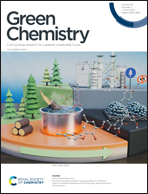Challenges and recent advances in bio-based isocyanate production
Abstract
Polyurethanes (PUs) are key players in the plastics industry. According to the Global Polyurethane Market (2019–2023), their value in the global market reached $95.13 billion in 2019 and is expected to grow at a compound annual growth rate of 12%. This is in line with the increase in the number of research papers and patents on the synthesis and application of petroleum-based PUs (P-PUs) and biomass or green PUs (G-PUs) (from 67 657 to 79 468, and from 198 810 to 226 164 for papers and patents, respectively, just over the past decade). Environmental concerns about fossil-based isocyanates are the reason why investigations on their green counterparts have got receiving more attention. According to statistics, almost 8% of research papers published on PUs between 2015 and the present used green-based resources. However, no comprehensive report or review dealt with such an important field in the chemistry of polyurethanes. This review highlights and reviews the production of isocyanate compounds directly from biomass. Moreover, various methods applied in the synthesis of bio-derived isocyanates are discussed. Technically, we discuss the main difficulties in the synthesis of biomass-based PUs. To address sustainability concerns, we overview the whole range of isocyanate compounds economically viable for biomass-based synthesis. We believe that the elimination of phosgene is a key to the production of green PUs. However, there is still a long way to go to develop green PUs with properties and performance comparable to fossil-based ones.

- This article is part of the themed collection: 2023 Green Chemistry Reviews


 Please wait while we load your content...
Please wait while we load your content...